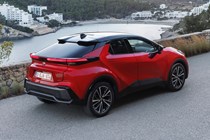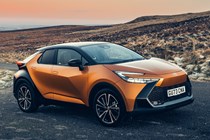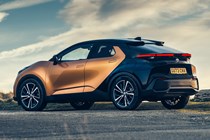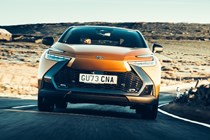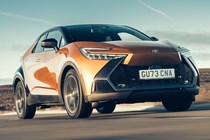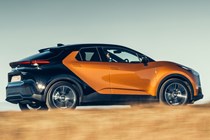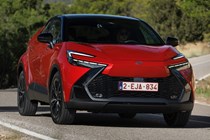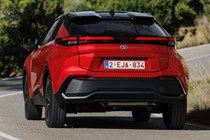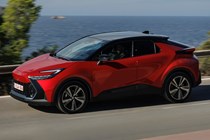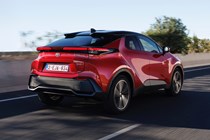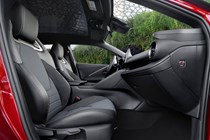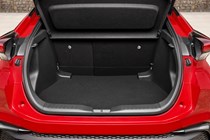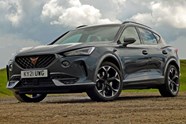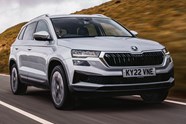
Toyota C-HR review
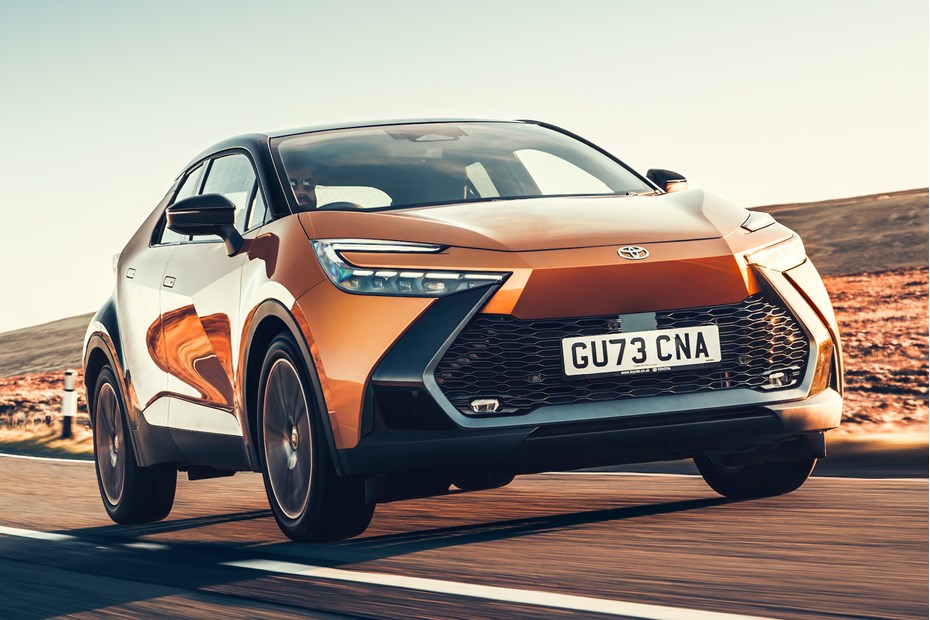
At a glance
| Price new | £39,145 - £46,590 |
|---|---|
| Used prices | £30,524 - £38,060 |
| Road tax cost | £180 - £590 |
Get an insurance quote with

|
|
| Fuel economy | Not tested to latest standards |
| View full specs for a specific version | |
Available fuel types
Alternative fuel
Pros & cons
- Efficient
- Quality feel up front
- PHEV's punchy performance
- Not all that practical
- Rear quality well behind the front
- Not as dynamic as it looks
Toyota C-HR SUV rivals
Overview
This is the second generation of the rather popular Toyota C-HR, a hybrid-only SUV that puts style above space. With the addition of a plug-in hybrid powertrain for the first time, could this be one of the best hybrids out there?
It’s similar in size to a Skoda Karoq, although we’d argue more rakish alternatives are more natural rivals. This includes the Renault Arkana which is also available with hybrid power. Alternatively, there’s always the Cupra Formentor.
The C-HR isn’t available with quite as much power as the Formentor, and there isn’t the option of four-wheel drive in the UK. You do get the choice of 140hp or 197hp self-charging hybrids or the aforementioned plug-in hybrid. This ups power to 223hp and makes the acceleration brisk, if not outright fast. The claimed EV-only range is 41 miles giving CO2 emissions of 19-20g/km, good news for company car users.
With a new platform, fifth-generation self-charging and third-generation plug-in in hybrid powertrains and the promise of a premium interior, Toyota has certainly gone all in. That’s especially true of the styling that’s even more extravagant than its predecessor.
There are four core models in the range and a top-spec Premiere Edition that’s only on sale for the year of production. Things kick off with the entry-level Icon, which gives you auto wipers and lights with high beam assist, keyless entry and start, a reversing camera, climate control, 17-inch wheels and the equipment we’ve mentioned already.
Design is predicted to be the big seller, adding rear cross traffic alert with auto braking, front and rear parking sensors, ambient lighting, a rear USB port, a wireless phone charger, dual-zone climate control, 18-inch wheels and heated front seats amongst other things.
Next up is GR Sport which adds 20-inch alloy wheels, two-tone paint, a head-up display, upgraded ambient lighting, a JBL stereo, Alcantara seats with electric driver’s adjustment and a noise reducing windscreen. Excel is more luxury oriented so gets smaller 19-inch wheels, adaptive high beam, lane change assist, front cross traffic alert, a panoramic camera, synthetic leather and suede seats and a black roof.
Premiere adds a few items that’d normally be optional including a panoramic roof, digital rear-view mirror, digital key and real leather seats. We’d probably stick with Design.
Click through the next few pages to read everything you need to know about the Toyota C-HR, including its practicality, how much it costs to run, what it’s like to drive – and whether we recommend buying one.



